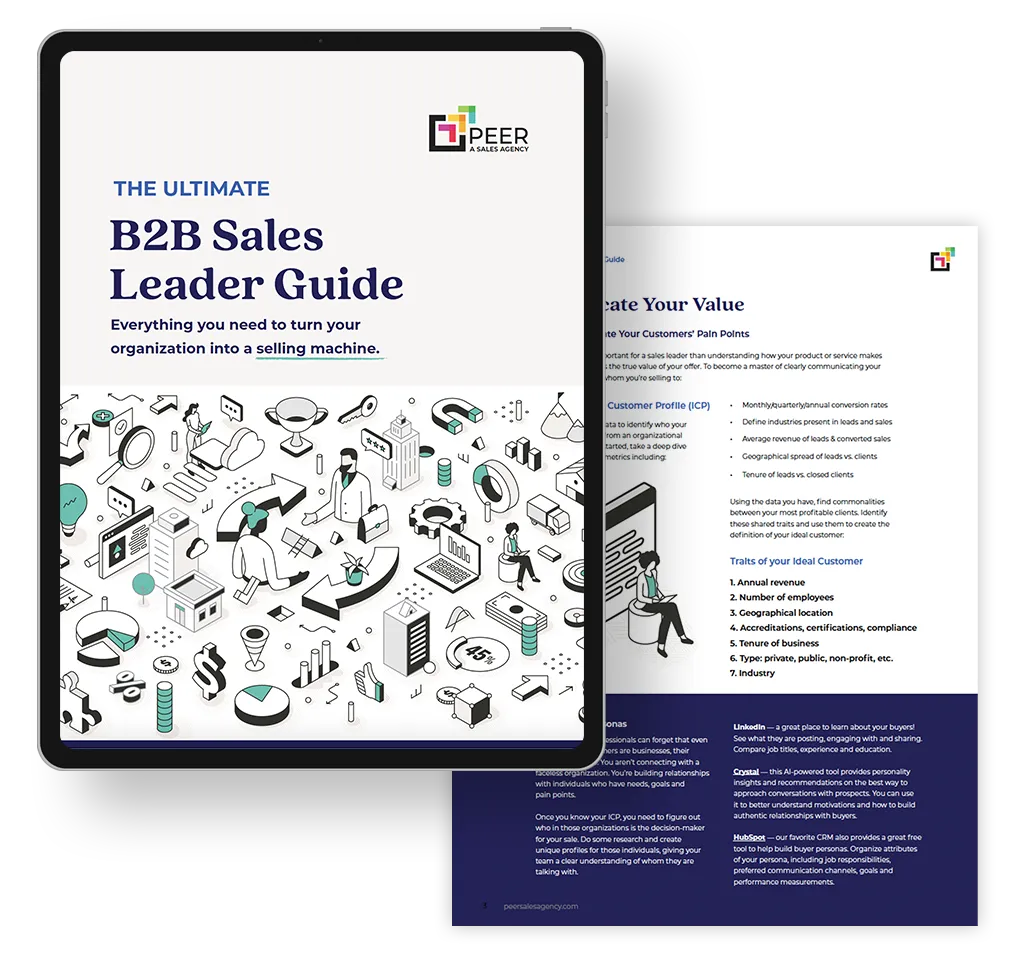Wouldn’t it be nice if we could have the simple buying cycle of our B2C friends? In B2B, we’re dealing with complex products and services. B2B buyers seek solutions that align with their business objectives, which takes time, research, and plenty of internal discussions.
And let’s not forget the good ol’ bureaucracy. In the corporate world, decisions go through more hoops than a circus tiger. We’ve got decision-makers, influencers, approvers, budget hawks, and even that one guy who’s perpetually “on vacation.” It’s like herding cats.
As prospects go through their buying journey, it’s essential to stay engaged and deliver the right content at the right time. This is where marketing automation comes to the rescue, offering an efficient way to nurture leads and improve conversion rates. Let’s delve into the power of automated lead nurturing, its benefits, and how to use it effectively. Additionally, we’ll explore scenarios where marketing automation might not be the best fit and common mistakes to avoid along the way.
The Challenge of the Long Sales Cycle
In the B2B world, sales cycles can stretch for months or even years, involving multiple decision-makers and stakeholders. Keeping prospects engaged throughout this prolonged process requires a strategic approach. Often, leads might lose interest or forget about your brand amidst the sea of competitors.
This is where lead nurturing becomes paramount. It allows you to maintain meaningful interactions with prospects, educate them on your offerings, and build trust over time. Without automation in place, it’s easy for leads to fall through the cracks and opportunities to get missed.
What Is Automated Lead Nurturing?
Automated lead nurturing is the process of using marketing automation software, such as HubSpot, to deliver relevant and timely content to prospects at different stages of the buying journey. By setting up a series of automated workflows, businesses can engage leads without manual intervention, ensuring consistent and personalized communication. Automated lead nurturing empowers marketing and sales teams to be more efficient, freeing up their time to focus on high-impact activities and closing deals.
How Marketing Automation Benefits Lead Nurturing
Lead nurturing is a critical process that can make or break the success of your business. Marketing automation can work wonders and boost the efficiency and effectiveness of your lead nurturing strategies in multiple ways:
Consistent and Timely Engagement
Marketing automation ensures that your prospects receive a consistent stream of relevant content and communications at every stage of their buying journey. By setting up automated workflows, leads are nurtured with timely emails, personalized messages, and valuable resources, keeping your brand at the forefront of their minds.
Lead Lifecycle Tracking
With marketing automation, you can gain valuable insights into your leads’ behavior and interactions with your content. This data allows you to track the entire lead lifecycle, understand which marketing efforts are working best, and make data-driven decisions to optimize your lead nurturing strategy continually.
Lead Re-engagement
Leads may lose interest or go cold at various stages of the buying process. Marketing automation provides opportunities for re-engagement, allowing you to trigger reactivation campaigns for dormant leads, reviving their interest and bringing them back into the sales funnel.
Automated Lead Handoff to Sales
As leads progress through the nurturing process, marketing automation can automatically notify and hand off qualified leads to your sales team. This seamless transfer ensures that sales representatives can promptly follow up with leads who are ready to convert, minimizing lead leakage and maximizing conversion rates.
Ways to Use Automation to Gain Efficiency and Results
Segmentation
One of the most powerful features of marketing automation software is the ability to segment leads based on various criteria such as demographics, behavior, and engagement level. By segmenting your audience, you can tailor your messaging and content to address specific pain points and interests, increasing the chances of conversion. Let’s say you have a prospect checking out a service page on your website. On that page, you offer an ebook about that particular solution. They download the ebook and enter an automation workflow. Based on the page and content they engaged with, we can segment them into a workflow personalized to their interests, and funnel more relevant content to them that they will find useful.
Drip Campaigns
Drip campaigns are a series of pre-scheduled emails that are automatically sent to leads over time. These campaigns are designed to nurture leads gradually, providing valuable information and insights that guide them through the sales funnel. Drip campaigns maintain a consistent presence in the minds of prospects, ensuring they stay connected with your brand.
Read: Stop Writing Shitty Lead Nurture Emails! 9 Ways to Improve Your Lead Nurturing Campaign.
Lead Scoring
Not all leads are created equal, and lead scoring is a technique that allows you to prioritize prospects based on their engagement and readiness to buy. Marketing automation platforms can assign scores to leads based on their interactions with your content, website visits, and other behaviors. They can even notify sales reps when a lead reaches a score threshold. This way, your sales team can focus their efforts on the most qualified leads, boosting efficiency and closing rates.
8 Lead Nurture Campaigns to Engage Your Leads
You’d be surprised at how many ways you can implement workflows to help engage your leads and ensure the money you are spending on recruiting those leads in the first place isn’t going to waste. Here are a few to get you started:
1. Welcome Campaigns: First impressions matter, and welcome campaigns are the perfect opportunity to make a positive impact on your newly acquired leads. These campaigns consist of a series of automated emails or messages that introduce your brand, set expectations, and deliver valuable content to kickstart the nurturing process.
2. Educational Campaigns: Education is a powerful tool in lead nurturing, especially in B2B industries where informed decision-making is paramount. Educational campaigns deliver valuable content, such as ebooks, white papers, webinars, and guides, that address specific pain points and challenges faced by your target audience.
3. Re-engagement Campaigns: Sometimes, leads might lose interest or go silent during the nurturing process. Re-engagement campaigns are triggered by inactivity and are designed to bring these dormant leads back into the fold. These campaigns offer fresh content, exclusive offers, or personalized incentives to reignite their interest.
4. Abandoned Cart/Conversion Campaigns: In e-commerce and online businesses, abandoned carts can be a significant source of lost revenue. Abandoned cart or conversion campaigns use marketing automation to send reminders and incentives to prospects who showed interest but did not complete their purchase.
5. Upsell/Cross-sell Campaigns: For existing customers, upselling and cross-selling campaigns can be highly effective. Based on their past purchases and behavior, these campaigns recommend relevant products or services that complement their existing ones, thereby increasing customer lifetime value.
6. Event-based Campaigns: Triggered by specific actions or milestones, event-based campaigns personalize communication based on the prospect’s behavior. For example, if a lead downloads a particular resource, an event-based campaign can send follow-up content that aligns with their interests.
7. Lead Scoring Campaigns: Lead scoring is a continuous process of evaluating lead engagement and readiness to buy. Lead scoring campaigns automatically adjust lead scores based on actions taken by prospects, ensuring that the most qualified leads receive the appropriate attention from sales.
8. Customer Onboarding Campaigns: The relationship with a customer doesn’t end after the sale; it begins. Customer onboarding campaigns help new customers get acquainted with your product or service, ensuring a smooth transition and maximizing their long-term satisfaction.
How to Get Started with Marketing Automation
Before you dive into setting up lead nurture sequences, there are a few things you want to have in place to ensure you get the best results.
Define Your Buyer Personas
Before diving into marketing automation, it’s crucial to have a clear understanding of your target audience. Develop detailed buyer personas that outline the characteristics, pain points, and objectives of your ideal customers. This information will guide your content creation and help you personalize your nurturing efforts effectively.
If you don’t already have a persona, Hubspot has a great tool to get you started in a pinch: https://www.hubspot.com/make-my-persona
Map Out Your Customer Journey
Understand the different touchpoints and interactions that a lead might have with your brand from the moment they become aware of your existence until they make a purchase decision. Map out this customer journey and design your automated workflows accordingly, ensuring that your content aligns with each stage of the funnel.
Create Compelling Content
Content is the lifeblood of lead nurturing. Craft engaging and informative content that resonates with your audience at each stage of their journey. From blog posts and ebooks to webinars and case studies, provide valuable resources that address the challenges and questions your prospects might have. Not only will creating high-quality content help you stay in front of leads, but it’s also a great way to boost SEO, build credibility and thought leadership. And if done strategically you can even lower your cost per acquisition.
Select a Marketing Automation Platform
Ultimately, selecting the right marketing automation platform will empower your team to use the tool to drive results in your lead nurturing endeavors. Look for a platform that offers robust features like:
- Lead scoring
- Segmentation capabilities
- Drip campaign management
- Easy-to-use analytics
- Integrations with your CRM, CMS, and social platforms
We are big fans of HubSpot because of its all-in-one capabilities, training, and customer support.
Read: Why choose HubSpot for your small business?
When One-to-One Communication Is a Better Way to Go
Automating your lead nurturing activities can be a game changer, but it’s important to stay involved on a personal level at various times during the buying process.
1. Relationship Building: Establishing and nurturing relationships with prospects requires a personal touch. Remembering details about their interests, preferences, and past interactions can create a sense of connection and loyalty. There’s always a balance so be cautious of relying on automation to the point where you lose all personal touch.
2. Complex Decision-Making Processes: In B2B sales, deals often involve multiple decision-makers and stakeholders. Engaging in personalized communication with each individual can help you address their specific concerns and align their interests.
3. Handling Complaints or Issues: When customers encounter problems or have complaints, empathetic and personalized communication is crucial. Responding promptly and with care can turn a negative experience into an opportunity to showcase exceptional customer service. If you have an issue arise with a prospect, always check their record in your CRM. If they are enrolled in a workflow, you’ll want to opt them out to avoid communication confusion.
4. Account-Based Marketing (ABM): ABM strategies involve targeting specific accounts with highly personalized campaigns. In such cases, understanding the unique needs and pain points of each target company is paramount, and personal communication can drive better results. There are ways to automate these campaigns, they just take some extra planning and care.
Common Mistakes to Avoid
Over-Automation
While marketing automation is a powerful tool, overdoing it can be counterproductive. Avoid bombarding leads with generic or irrelevant content, as this may alienate them and lead to unsubscribes. Strive for balance and personalization to create a meaningful connection with your audience.
Neglecting Human Touch
Automation is fantastic, but it should never replace the human touch entirely. Be sure to integrate personalized touches along the way to foster a sense of trust and authenticity. This could be personalized emails from sales reps, comments on social, or timely follow-ups.
Speed Up Your Sales Cycle
Automated lead nurturing is a game-changer in the world of B2B sales and marketing, offering a systematic way to engage prospects throughout their buying journey. By using marketing automation tools effectively you can streamline your lead nurturing process, increase efficiency, and improve conversion rates. If you’d like some guidance in getting your first workflow set up.




